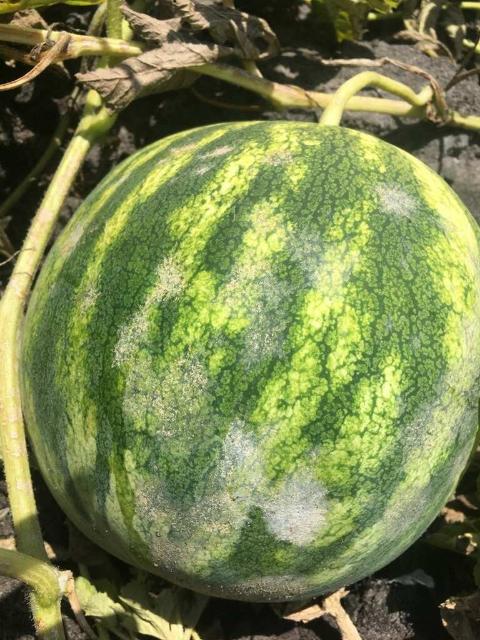By Clint Thompson

Credit: Kevin Short
North Florida watermelon farmers and industry leaders have yet to see a widespread attack of any one disease, such as powdery mildew. But they are paying close attention to the plants that are in the ground.

Bob Hochmuth, University of Florida Institute of Food and Agricultural Sciences (UF/IFAS) regional specialized Extension agent in Live Oak, Florida, is keeping a close eye on one disease in particular.
“We are very conscientious about powdery mildew. It would be the next thing we want to be on the lookout for. We have not had any confirmations yet, but we’re keeping a close eye out on powdery mildew,” Hochmuth said. “That one is hard to control if you don’t get ahead of it.”
Symptoms of the disease on watermelon plants appear as yellow blotches on the oldest leaves first. The fungus spreads to the entire leaf if the disease is left untreated. These blotches become bronzed and turn dark brown or purplish as the disease progresses during the season. Eventually the leaf dies and has a crisp texture.
Hopefully, growers will take advantage of the system in place that will allow for early detection.
“For our area, we’ve got this rapid diagnostic program in place so that if a farmer is suspicious, if they suspect they might have powdery mildew, we certainly want them to reach out to their county Extension agent so we can get a sample to the lab,” Hochmuth said.
Fields that have plants dying are mostly related to the high wind gusts and sand blasting damage, Hochmuth said.










